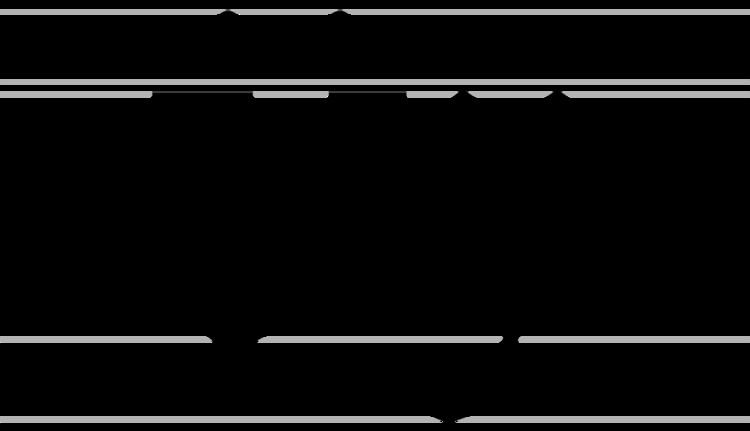 | ||
Short U (Ў ў; italics: Ў ў) is a letter of the Cyrillic script. The only Slavic language using this letter is the Belarusian Cyrillic script. Among the non-Slavic languages using Cyrillic alphabets, ў is used in the Dungan language and in the Siberian Yupik language. It was also used in Uzbek before the adoption of the Latin alphabet in 1992.
Contents
History
The letter originates from the letter izhitsa ⟨Ѵ ѵ⟩ with a breve (Іереѵ̆ская власть, пучина Егеѵ̆ская, etc.) used in certain Ukrainian books at the end of the 16th and the beginning of the 17th centuries. Later, this character was probably in use in the Romanian Cyrillic script, from where it was borrowed in 1837 by the compilers of Ukrainian poetry book Rusalka Dnistrovaja (Русалка днѣстровая). The book's foreword reads “we have accepted Serbian џ . . . and Wallachian [Romanian] ў . . .”. In this book, ⟨ў⟩ is used mostly for etymological [l] transformed to [w]. Modern Ukrainian spelling uses ⟨в⟩ ([v]) in that position.
For Belarusian, the combination of the Cyrillic letter U with a breve ⟨ў⟩ was proposed by P.A. Bessonov in 1870. Before that, various ad hoc adaptations of the Latin U were used, for example, italicized in some publications of Vintsent Dunin-Martsinkyevich, with acute accent ⟨ú⟩ in Jan Czeczot's Da milykh mužyczkoú (To dear peasants, 1846 edition), W with breve ⟨w̆⟩ in Epimakh-Shypila, 1889, or just the letter ⟨u⟩ itself (likevin publications of Konstanty Kalinowski, 1862–1863). A U with haček ⟨ǔ⟩ was also used.
After 1870, both the distinction for the phoneme and the new shape of the letter still were not consistently used until the mid-1900s for technical problems, per Bulyka. Among the first publications using it were folklore collections published by Michał Federowski and the first edition of Francišak Bahuševič's Dudka Biełaruskaja (Belarusian flute, published in Kraków, 1891). For quite a while other kinds of renderings (plain ⟨u⟩, or with added accent, haček, or caret) were still being used, sometimes within a single publication (Bahushevich, 1891, Pachobka, 1915), also supposedly because of technical problems.
Belarusian
The letter is called non-syllabic u or short u (Belarusian: у нескладовае, u nieskladovaje or у кароткае, u karotkaje) in Belarusian because, while resembling the vowel у (u), it does not form syllables. Its equivalent in the Belarusian Latin alphabet is ⟨ŭ⟩, although it is also sometimes transcribed as ⟨w⟩.
In native Belarusian words, ⟨ў⟩ represents the sonorant bilabial fricative consonant, as in хлеў, pronounced [xlʲeʊ] (chleŭ, ‘shed’) or воўк [vɔʊk] (voŭk, ‘wolf’). This is similar to the ⟨w⟩ in English cow /kaʊ/.
The letter ⟨ў⟩ cannot occur before a vowel; when grammar would require this, ⟨ў⟩ is replaced by ⟨в⟩ /v/. Compare хлеў ([xlʲeʊ] chleŭ) with за хлявом ([za xlʲaˈvom] za chlavóm, ‘behind the shed’). Also, when a word beginning with ⟨у⟩ /u/ follows a vowel, so that it forms a diphthong through liaison, it is usually, but not necessary, written with ⟨ў⟩ instead. For example, у хляве ([u xlʲaˈvʲe] u chlavié, ‘in the shed’) but увайшлі яны ў хлеў ([uvajʃˈlʲi jaˈnɨ ʊ xlʲeʊ] uvajšlí janý ŭ chleŭ, ‘they went into the shed’).
The letter ⟨ў⟩ is also used to represent the labial-velar approximant /w/ in foreign loanwords.
Monument
In September 2003, during the tenth Days of Belarusian Literacy celebrations, the authorities in Polatsk, the oldest Belarusian city, made a monument to honor the unique Cyrillic Belarusian letter ⟨ў⟩. The original idea for the monument came from professor Paval Siemčanka, a scholar of Cyrillic calligraphy and type.
